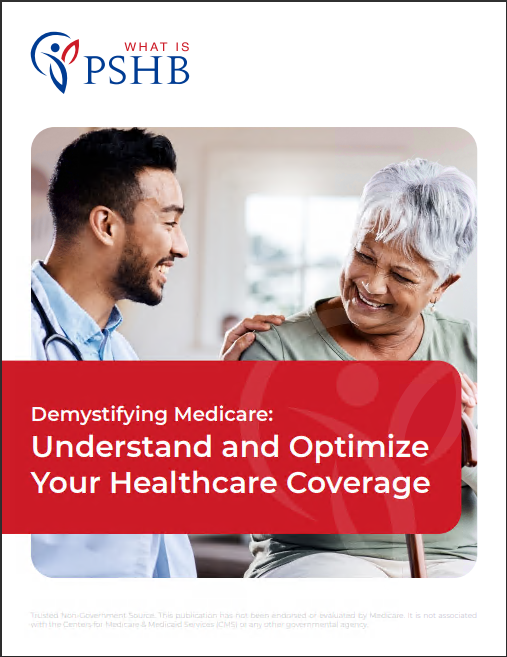Key Takeaways
-
You have a limited opportunity to review and make changes to your Postal Service Health Benefits (PSHB) plan. Missing this window could lock in choices that may not serve you well in the long run.
-
Certain groups of USPS employees and retirees must take specific actions—like enrolling in Medicare Part B—to maintain or enhance their PSHB coverage.
What the PSHB Transition Means for You
In 2025, the United States Postal Service officially transitioned its employees and retirees from the Federal Employees Health Benefits (FEHB) Program to the newly created Postal Service Health Benefits (PSHB) Program. This major shift affects active USPS employees, annuitants, and eligible family members. If you fall into any of these categories, you need to be aware of what’s changing and what decisions you need to make—quickly.
The PSHB Program was established to offer health insurance tailored specifically for postal workers and retirees. While it closely mirrors FEHB in structure, there are key differences, especially for those eligible for Medicare.
You May Be Automatically Enrolled—But That Doesn’t Mean You’re Set
If you’re already enrolled in an FEHB plan as of late 2024, you’ve likely been automatically mapped to a corresponding PSHB plan as of January 1, 2025. However, this doesn’t mean you should sit back and assume everything is fine.
During the Open Season from November to December, you had a limited time to:
-
Compare your mapped PSHB plan with other available options
-
Switch to a different PSHB plan
-
Enroll eligible family members
-
Drop coverage if no longer needed
If you didn’t act during Open Season, you’re now locked into your default PSHB plan unless you qualify for a future Special enrollment Period (SEP).
Don’t Overlook Medicare Part B Requirements
One of the most significant changes in 2025 is the integration of Medicare Part B with PSHB coverage. If you or your covered family members are eligible for Medicare, you may be required to enroll in Part B to maintain full PSHB benefits.
This applies if:
-
You’re a USPS annuitant or family member who turns 65 in 2025 or later
-
You’re already over 65 and not yet enrolled in Medicare Part B
Who’s Exempt?
-
Annuitants who retired on or before January 1, 2025
-
Active employees aged 64 or older as of January 1, 2025
-
Individuals living abroad or enrolled in certain other federal programs such as VA or Indian Health Services
If you’re required to enroll and don’t do so, your PSHB plan may exclude or reduce your benefits significantly.
Prescription Drug Coverage Changes
Another crucial update is the integration of prescription drug coverage with Medicare Part D through an Employer Group Waiver Plan (EGWP) for Medicare-eligible enrollees.
This means:
-
You get automatic drug coverage if enrolled in Medicare Part A and Part B
-
You benefit from enhanced coverage like a $2,000 out-of-pocket cap for prescriptions
-
You must not opt out of the drug coverage unless you have another qualifying plan
Failing to comply can result in loss of prescription coverage and limited opportunities to re-enroll.
Premiums, Deductibles, and Out-of-Pocket Costs: What’s New
While PSHB mirrors FEHB in structure, you may notice different:
-
Monthly premiums depending on your plan type and family size
-
Deductible amounts, which can range from $350 to $2,000 for in-network services
-
Coinsurance percentages between 10% and 30% for in-network care, and much higher out-of-network
-
Out-of-pocket maximums of up to $7,500 for individuals and $15,000 for families
If you also have Medicare Part B, your plan may waive or reduce certain deductibles and coinsurance. This is an important incentive to weigh when deciding whether to enroll in Part B.
Keeping Other Federal Benefits Intact
It’s important to note that your participation in the PSHB Program does not affect your eligibility for other federal benefits such as:
-
Dental and vision coverage through FEDVIP
-
Life insurance through FEGLI
-
Long-term care coverage under FLTCIP
-
Flexible Spending Accounts (FSAFEDS)
You should continue managing those benefits separately.
What If You Missed the Enrollment Window?
If you didn’t make changes during the Open Season, you might still have options:
-
A Special Enrollment Period (SEP) can be triggered by life events such as marriage, birth of a child, or loss of other coverage
-
Medicare-eligible enrollees may qualify for a one-time SEP to enroll in Part B if they missed the initial deadline
However, these windows are time-sensitive, often lasting only 60 days from the qualifying event.
How to Confirm Your Current Coverage
If you’re an annuitant, you can review your current PSHB plan details by visiting the official OPM site or the KeepingPosted.org portal. Active employees should use LiteBlue. Make sure you:
-
Verify your plan type (Self Only, Self Plus One, or Self and Family)
-
Confirm that covered family members are correctly listed
-
Double-check premium deductions and plan benefits
This ensures that no administrative error goes unnoticed—and gives you the opportunity to fix it if needed.
Plan to Reassess Annually
Even if you’re satisfied with your current PSHB plan, make it a habit to reassess your coverage every Open Season. Plan offerings, benefits, costs, and Medicare integration details can change from year to year.
Open Season runs from November to December each year, with any changes taking effect on January 1 of the following year.
Stay Proactive and Informed
To avoid surprises or missed benefits:
-
Set calendar reminders for Open Season
-
Revisit Medicare eligibility status for yourself and covered dependents
-
Keep your mailing address and contact information up to date with USPS and OPM
The more proactive you are, the better prepared you’ll be to choose the coverage that best fits your needs.
What You Should Do Next
If you haven’t already:
-
Check your current PSHB plan details
-
Determine whether you or a family member must enroll in Medicare Part B
-
Set reminders for the next Open Season
-
Reach out for clarification if you’re unsure about your options
Don’t Wait Until It’s Too Late
There’s a lot riding on these decisions, and the window to act doesn’t stay open for long. Whether you’re a retiree facing Medicare requirements or an active employee reviewing family coverage, the time to act is now.
For help understanding your choices and making confident decisions, get in touch with a licensed agent listed on this website for professional advice tailored to your situation.







